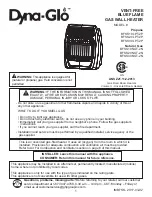
Fig. 7: Minimum Clearances from Combustible
Surfaces – Outdoor Installations
Combustion and Ventilation Air
Indoor Units
The heater must be supplied with sufficient quantities
of non-contaminated air to support proper combustion
and equipment ventilation. Combustion air can be sup-
plied via conventional means where combustion air is
drawn from the area immediately surrounding the
heater, or via direct vent, where combustion air is
drawn directly from outside. All installations must com-
ply with the requirements of the NFGC (U.S.) and
B149 (Canada), and all local codes.
Reversing Air Filter
Follow these instructions to change the air duct con-
nection from the left-hand side (standard) to the
right-hand side:
1. Remove the four screws and the dust cover from
the right-hand side of the heater.
2. Remove the four screws and the air filter bracket
from the left-hand side of the heater.
3. Reverse the components and reattach in the new
location, making sure that the air filter locking
bracket is on the bottom. (The air filter locking
bracket is reversible.)
Direct Vent
If outside air is drawn through the intake pipe directly
to the unit for combustion:
1. Install combustion air direct vent in accordance
with Fig. 31 (horizontal) or Fig. 32 (vertical) of this
manual (pages 33 and 34, respectively).
2. Ventilation of the space occupied by the heater(s)
is recommended and can be provided by an open-
ing(s) for ventilation air at within 12” of the ceiling
or the highest practical point communicating with
the outdoors. The total cross-sectional area
should be at least 1 in.
2
of free area per 20,000
BTUH (111 mm
2
per kW) of total input rating of all
equipment in the room when the opening is com-
municating directly with the outdoors or through
vertical duct(s). The total cross-sectional area
should be at least 1 in.
2
of free area per 10,000
BTUH (222 mm
2
per kW) of total input rating of all
equipment in the room when the opening is com-
municating with the outdoors through horizontal
duct(s). Damage to the equipment due to inade-
quate ventilation of the space is not a warrantable
failure.
Direct-Ducted Combustion Air
In certain applications it may be desirable to duct the
combustion air directly to the heater. This should be
done with PVC, CPVC or single-wall galvanized duct-
ing. The duct will attach directly to the collar on the air
filter housing located on the side of the heater. The
ducting is attached to the air filter housing collar using
CAUTION:
Combustion air must not be
contaminated by corrosive chemical fumes which
can damage the heater and void the warranty. (See
the Appendix.)
NOTE:
It is recommended that the intake vent be
insulated to minimize sweating.
NOTE:
In cold climates, and to mitigate potential
freeze-up, Raypak highly recommends the installa-
tion of a motorized sealed damper to prevent the
circulation of cold air through the heater during the
non-operating hours.
NOTE:
Use of the heater in construction areas
where fine particulate matter, such as concrete or
dry-wall dust, is present may result in damage to the
heater that is not covered by the warranty. If
operated in a construction environment, a clean
source of combustion air must be provided directly to
the heater.
12
Front View
Side View
Содержание 992C
Страница 2: ...2 Revision 2 reflects the following changes Removed California Proposition 65 warning on page 4...
Страница 54: ...54 Wiring Diagram Models 992C 1262C...
Страница 55: ...55 Wiring Diagram Models 1532C 2342C...
Страница 69: ...69...
Страница 70: ...70...
Страница 71: ...71...
Страница 72: ...72 www raypak com Raypak Inc 2151 Eastman Avenue Oxnard CA 93030 805 278 5300 Fax 805 278 5468 Litho in U S A...













































